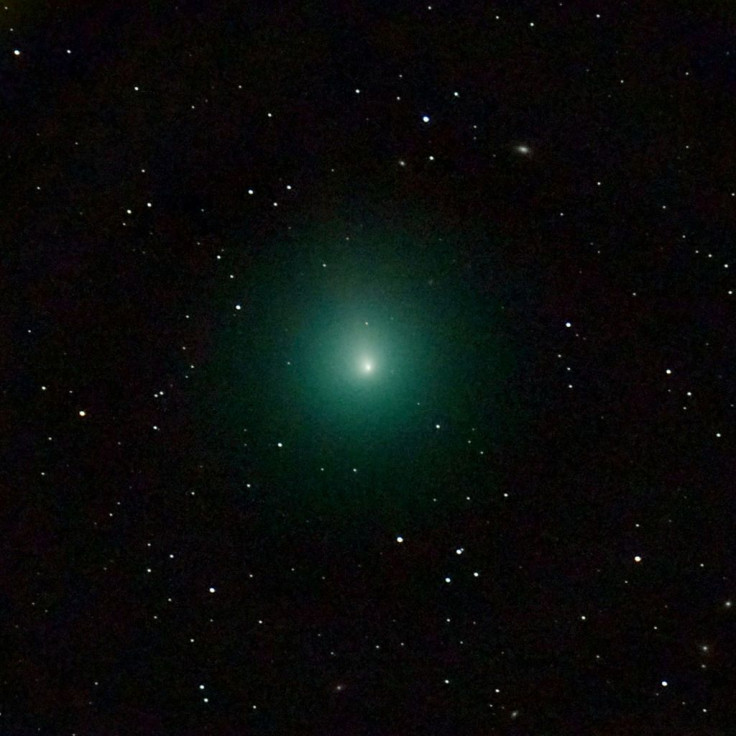NASA's Hubble Space Telescope Catches Brightest Comet Of 2018 On Camera [PHOTO]

NASA's telescopes were able to capture the brightest comet of 2018 on camera.
On Dec. 13, NASA's Hubble Space Telescope got a close look at the comet 46P/Wirtanen as it streaked across the sky. In the visible light image taken by NASA, the nucleus of the comet, which is 7.4 million miles (12 million kilometers) from Earth, is hidden in the center of a fuzzy glow from the 46P/Wirtanen's coma. A comet's coma is a cloud of dust and gas that it has ejected during its journey across the solar system as a result of heating from the Sun.
According to NASA, the color blue was applied to high-resolution grayscale exposures acquired from the spacecraft's WFC3 instrument in order to make the composite image of the comet.
The inner part of a comet's coma is not usually observable from Earth. But astronomers were able to study 46P/Wirtanen due to the close fly-by of this particular comet. The scientists made use of the Hubble, the Neil Gehrels Swift Observatory and NASA's Chandra X-ray Observatory in order to get as much information as they can from the comet. Their studies included the composition of the comet's ices, the release of the gases from the nucleus and the chemical alteration of the coma's gas due to sunlight and solar radiation.
Comet 46P/Wirtanen flew closest to the Earth on Dec. 16 at just over 7 million miles (11 million kilometers) from our planet, according to Science Daily. This distance is about 30 times farther away than the Moon is from Earth. Despite it being the brightest comet of 2018, the 46P/Wirtanen comet is still just barely visible to the naked eye even when the sky is very dark. People can only really see it with the help of binoculars or a telescope.
On Dec. 16 and 17, NASA's Stratospheric Observatory for Infrared Astronomy (SOFIA) captured an image of comet 46P/Wirtanen when the aircraft was flying at 40,000 feet.
It is believed that asteroids and comets may be the source of Earth's water. SOFIA is studying the chemical fingerprints of different types of hydrogen in the comet's water. This will apparently give us clues on the origins and history of water in the Earth's oceans and the rest of the solar system.
Using their visible light guide camera, SOFIA took the image with an orange filter to indicate the intensity of light relative to other objects. Scientists are currently analyzing SOFIA's findings using infrared light to study the comet's water.
© Copyright IBTimes 2024. All rights reserved.






















